For all ancient Egyptians, the world was filled with mystery. Much of what they experienced in the world around them was unknowable and frightening. The ancient Egyptian gods and goddesses represented aspects of the Egyptians’ natural and “supernatural” surroundings and helped them understand its many aspects.
During the long history of Egypt, hundreds of gods and goddesses were worshipped. The characteristics of gods and goddesses could be hard to pin down. Most Egyptian gods represented one principle aspect of the world: Ra was the sun god, for example, and Nut was goddess of the sky. The characters of the gods were not clearly defined. Most were generally benevolent but their favor could not be counted on. Some gods were spiteful and had to be placated. Some, such as Neith, Sekhmet, and Mut, had changeable characters. The god Seth, who murdered his brother Osiris, embodied the malevolent and disordered aspects of the world.
The ancient Egyptians looked at the stars, the flooding of the Nile, the sunrise & sunset, and more to seek an explanation that came in the shape of a vast pantheon of gods. Great tales, temples, and valleys were built in the honor of these heavenly creatures that they came to know as Ancient Egyptian gods and goddesses who were responsible for all the gifts and pleasures of every single soul in Egypt. The Ancient Egyptians saw that the ancient Egyptian gods and goddesses were celestial beings that can unlock the wonders of the milky way, perform miracles and great acts of wonder, that’s why they decided to honor them by embodying them into a physical form that can be found all over Egypt in Cairo, Alexandria, Luxor, & Aswan.
how many Egyptian gods are there
The Egyptians had no problem with a multitude of gods and they seldom shelved old deities in favor of new ones. Characteristics and roles of various gods were syncretized to reconcile differing religious beliefs, customs, or ideals. For political and religious reasons, for example, the Theban god Amun, who was considered the most powerful deity in the New Kingdom, was united with Ra, a sun god whose cult dated to the beginnings of Egypt. Worship of the gods of Egypt evolved over time as large cults developed on a local and then on a national scale.
The gods and goddesses of Ancient Egypt were an integral part of the people’s everyday lives. It is not surprising then that there were over 2,000 deities in the Egyptian pantheon. Some of these deities’ names are well known: Isis, Osiris, Horus, Amun, Ra, Hathor, Bastet, Thoth, Anubis, and Ptah while many others less so.
How did Egyptian gods look like
The physical form taken on by the various Egyptian gods was usually a combination of human and animal, and many were associated with one or more animal species. And an animal could express a deity’s mood. When a god was angry, she might be portrayed as a ferocious lioness; when gentle, a cat. The convention was to depict the animal gods with a human body and an animal head. The opposite convention was sometimes used for representations of a king, who might be portrayed with a human head and a lion’s body, as in the case of the Sphinx. Sphinxes might also appear with other heads, particularly those of rams or falcons.
One key component of their spiritual awareness was the magic or what they called “Heka” which was a divine power that holds everything together in the mortal and divine life. Egypt has enjoyed a massive number of stories and myths that affected their life deeply; most of these Egyptian mythology gods’ stories were discovered on the walls of their temples in Luxor or passed down from one generation to another.
The human form of Gods of Egypt
Many deities were represented only in human form. Among these were such very ancient figures as the cosmic gods Shu of the air, Geb of the earth, the fertility god Min, and the craftsman Ptah. There were a number of minor gods that took on grotesque forms, including Bes, a dwarf with a mask-like face, and Taurt, a goddess whose physical form combined the features of a hippopotamus and a crocodile.
The Ancient Egyptian Gods and Goddesses VS Demons
The ancient Egyptians believed in demons. They believed that demons are powerful and scary but not as powerful as gods, they believed that they are mortal and could be in more than one place at the same time…they believed that they use their supernatural power to effect humans and nature too and that’s why they needed gods and goddesses to balance this and limit the demons power.
The physical form of most of the ancient Egyptian gods and goddesses was usually a combination of human and animal. And some were associated with more than an animal and took more than one shape. Few were all humans like Amun, Mut, Nut, Khonsu.
Here are some of the most famous Gods of Egypt
God Amun

A creator god, patron deity of the city of Thebes, and the preeminent deity in Egypt during the New Kingdom.
The King of the Egyptian gods was the greatest of the sun gods. Depictions of Amun represent him as a man with a hawk’s head with a bull’s tail hanging from his tunic.
Amun (Amun-Ra) – God of the sun and air. One of the most powerful and popular gods of ancient Egypt, patron of the city of Thebes, where he was worshipped as part of the Theban Triad of Amun, Mut, and Khonsu. Supreme king of the gods in some periods, though originally a minor fertility god. By the time of the New Kingdom he was considered the most powerful god in Egypt and his worship bordered on monotheism. Other gods were even considered mere aspects of Amun at this time. His priesthood was the most powerful in Egypt and the position of God’s Wife of Amun, given to royal women, almost on par with that of the pharaoh.
He is the supreme god of Egypt (specially new kingdom 1500 BC), his name means “the invisible” and although he’s called so, he was depicted in a form of a man with 2 plumes over his head referring to upper and lower Egypt.
The ancient Egyptians during the new kingdom considered him the king of all gods, a magician and a creator god. They built so many temples for him in Luxor such as Karnak Templ and Luxor Temple.
Before rising to national importance in the New Kingdom (c. 1539–1292 BCE), the god Amon was worshipped locally in the southern city of Thebes. Amon was a god of the air, and the name probably means the “Hidden One.” He was usually represented as a man wearing a crown with two vertical plumes. His animal symbols were the ram and the goose.
After the rulers of Thebes rebelled against a dynasty of foreign rulers known as the Hyksos and reestablished native Egyptian rule throughout Egypt, Amon received credit for their victory. In a form merged with the sun god Re, he became the most powerful deity in Egypt, a position he retained for most of the New Kingdom.
Today the massive temple complex devoted to Amon-Re at Karnak is one of the most visited monuments in Egypt. [Read a full article about God Amun]
Osiris
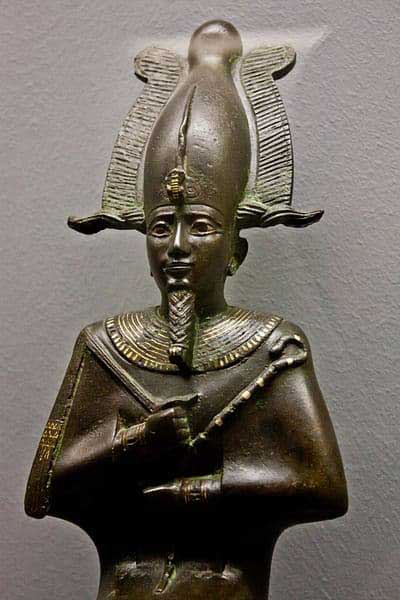
Osiris, god of death and resurrection who rules the underworld and enlivens vegetation, the sun god, and deceased souls, was one of the most important gods in ancient Egypt. He also symbolized death, resurrection, and the cycle of Nile floods that Egypt relied on for agricultural fertility.
According to the myth, Osiris was a king of Egypt who was murdered and dismembered by his brother Seth, and his body was cut into 14 pieces and scattered in different places in Egypt, that’s why so many temples were built for Osiris in different places such as Philae temple, Abydos temple and Dendara temple where 2 chapels were dedicated to him. His wife, Isis, reassembled his body and resurrected him, allowing them to conceive a son, the god Horus. He was represented as a mummified king, wearing wrappings that left only the green skin of his hands and face exposed.
He is usually depicted as a mummy holding the crook and flail of kingship. On his head he wears the white crown of Upper Egypt flanked by two plumes of feathers. Sometimes he is shown with the horns of a ram. His skin is depicted as blue, the color of the dead; black, the color of the fertile earth; or green, representing resurrection.
He was the most important god back in ancient Egypt, he’s the owner of the paradise and had the right to let the deceased in or be kicked out, let anyone enjoy the eternal life or be lost with no resurrection.
He is the son of goddess Nut (the sky) and god Ged (the earth), the husband and brother of goddess Isis and father of Horus the falcon.
Goddess Isis:

The Goddess of Fertility. She was also the goddess of magic and a healing goddess.
As a goddess of magic, it is believed that Isis took the shape of the bird and was flying allover the land of Egypt looking for the parts of the body of her husband Osiris after being killed, that’s why one of her shapes is a lady with 2 wings to commemorate the myth of Osiris.
Her cult center was in Aswan and she has a beautiful temple built up on an island called Philae temple.
Isis was one of the last of the ancient Egyptian gods to still be worshipped. In the Greco-Roman period she was identified with the Greek goddess Aphrodite and her cult spread as far west as Great Britain and as far east as Afghanistan. It is believed that depictions of Isis with the infant Horus influenced Christian imagery of Mary with the infant Jesus.
A very important figure in the ancient world, Isis was the wife of Osiris and mother of Horus. She was associated with funeral rites and said to have made the first mummy from the dismembered parts of Osiris. As the enchantress who resurrected Osiris and gave birth to Horus, she was also the giver of life, a healer and protector of kings.
Isis is represented with a throne on her head and sometimes shown breastfeeding the infant Horus. In this manifestation she was known as “Mother of God.” To the Egyptians she represented the ideal wife and mother; loving, devoted, and caring.
Her most famous temple is at Philae though her cult spread throughout the Medi-terranean world and, during the Roman period, extended as far as northern Europe. There was even a temple dedicated to her in London.
Horus
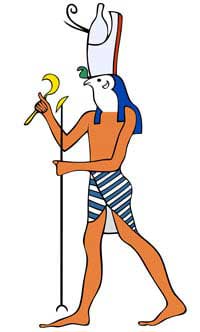
Horus is the son of Isis and Osiris. He’s a falcon headed god and sometimes a complete falcon that considered a protective god.
They believed that the pharaoh is the image of god Horus on the earth, They filled the tombs with his images while he’s receiving offering or prayers to support the deceased and help him reaching the paradise of his father god Osiris.
Horus has many aspects and so many temples such as Edfu temple, a part of Kom Ombo temple and Philae temple as well.
It is known that Horus revenged for his father god Osiris, as when he became adult he killed his uncle god Seth.
Depicted as a falcon or as a man with a falcon’s head, Horus was a sky god associated with war and hunting. He was also the embodiment of the divine kingship, and in some eras the reigning king was considered to be a manifestation of Horus.
[Read a full article about God Horus]
Seth

Seth was the son of Geb and Nut, and the evil brother of Osiris. He was the god of darkness, chaos, and confusion, and is represented as a man with an unknown animal head, often described as a Typhonian by the Greeks who associated him with the god Typhon. He is sometimes depicted as a hippopotamus, a pig, or a donkey. Seth murdered his brother and usurped the throne of Egypt and most of the other gods despised him.
Horus eventually defeated Seth, but it was thought that their battle was an eternal struggle between good and evil. Although Seth failed to keep the throne of Egypt he continued to be a companion of Ra. He sometimes accompanied Ra across the sky in his solar boat, causing storms and bad weather.
Seth was venerated by some, and his main cult center was at Naqada. Some kings would liken themselves to Seth in battle, but for the most part the people loathed him and his defeat by Horus was regularly celebrated.

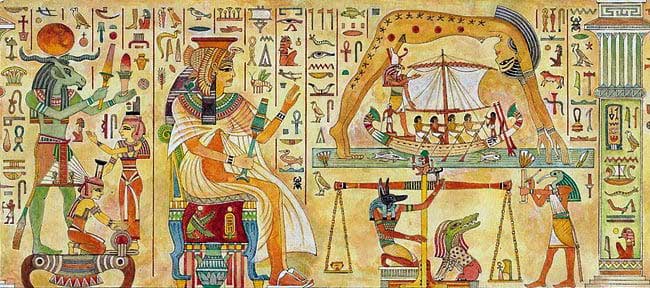
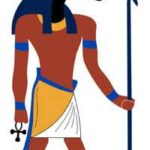
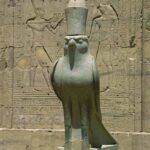





aut magni a possimus quo nulla praesentium itaque excepturi illo suscipit cumque magnam. officiis in inventore labore molestias dignissimos perferendis itaque rerum voluptate et vel cum. cupiditate molestiae tenetur voluptatem ad vel omnis tempora et sit quidem quos itaque aut et ut quod unde fuga. explicabo rerum animi placeat sint architecto minima molestiae.